Menu
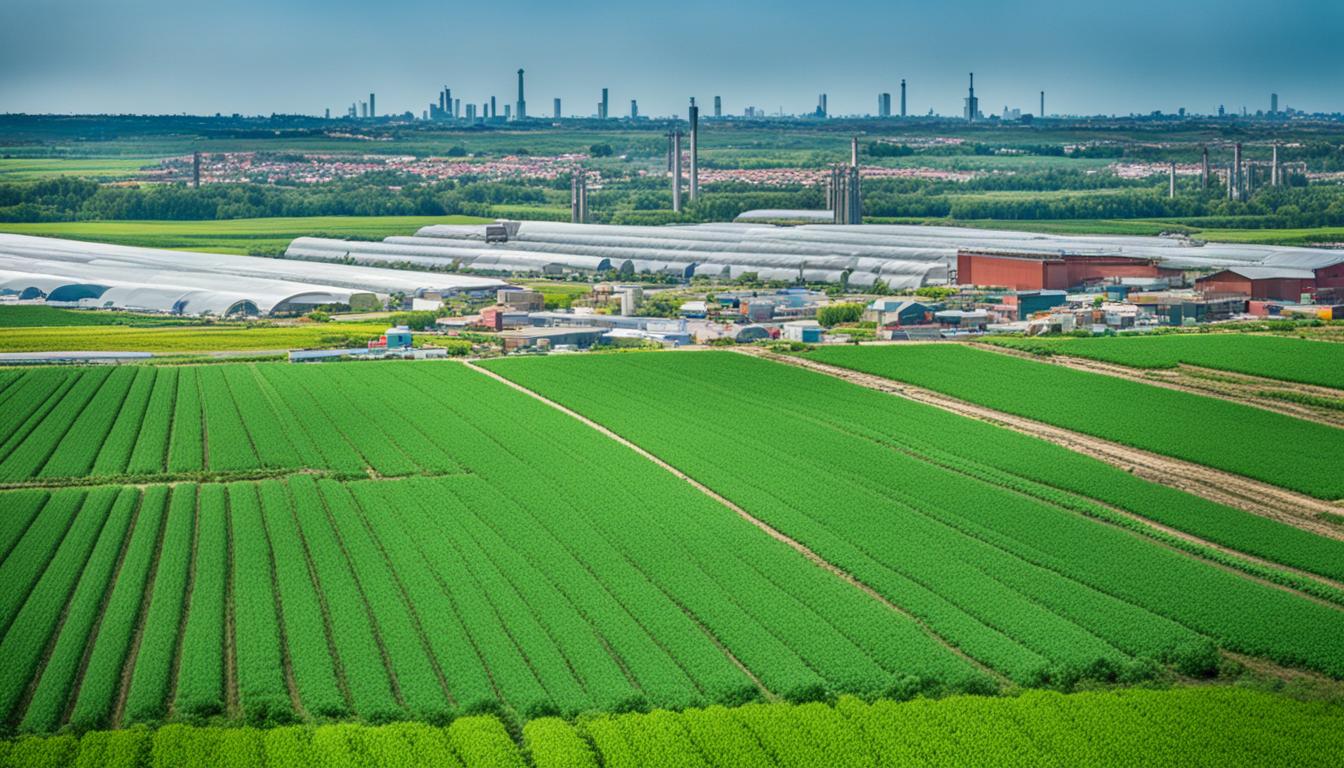
In Spain, agricultural cooperatives are a big deal. They include 3699 companies and made 30,556 million euros in 2019. This made up 68% of the country’s agricultural production total. So, it’s clear they are key to Spain’s economy, and this is true around the world.
Over the past seventy years, U.S. agricultural cooperatives have changed a lot. At first, they aimed to help family farmers. Now, they stand as both strong competitors and smart, big organisations. This has changed what it means to be part of a cooperative.
A new type of cooperative has emerged, focussing on ‘value-added’ efforts. This is a shift from the old ways that saw buyers and consumers as enemies. These newer cooperatives focus on teamwork and getting to new markets. They balance looking out for farmers and being savvy in business, helping with independent farming and the need for cooperative support.
In conclusion, agricultural cooperatives serve more than just bargaining needs. They are essential for growing economies, ensuring food safety, and supporting rural regions. Their ability to change with the market, yet stick to their values, is the key to their lasting success.
Agricultural cooperatives are key in farming, made up of groups of farmers working together. They merge to sell their goods better, buy supplies at lower prices, and improve their market standing. Knowing the definition of agricultural cooperatives helps us see their strong role in today’s farming.
These groups focus on working together for common good and benefits. They help their members access markets better, save on supply costs, and negotiate as one. The main cooperative principles include member control, shared economic gains, and community care, crucial for their success.
Originally, cooperatives aimed to protect farmers from market swings and big business control. Now, they are vital partners in the food supply chain, making sure farms are both efficient and powerful.
The history of cooperatives in agriculture shows how they grew from the New Deal era to today. They started to fight against unfair market practices but turned to teaming up for market success. In places like the U.S. and Argentina, they play a major role in farming.
Adapting new strategies has been critical for their survival. Reports like the USDA’s 1987 study have pushed for using new technology, such as EOSDA Crop Monitoring, more widely. But still, only a few farmers around the world use it.
Their focus on sustainable farming is also big. They help save resources and encourage eco-friendly farming. Their ongoing efforts in this area show their serious environmental commitment.
Agricultural cooperatives are key in driving economic growth. There are more than 1.2 million worldwide. They help farmers gain more power and find new ways to enter markets. This shape their economic power and open up new opportunities for them.
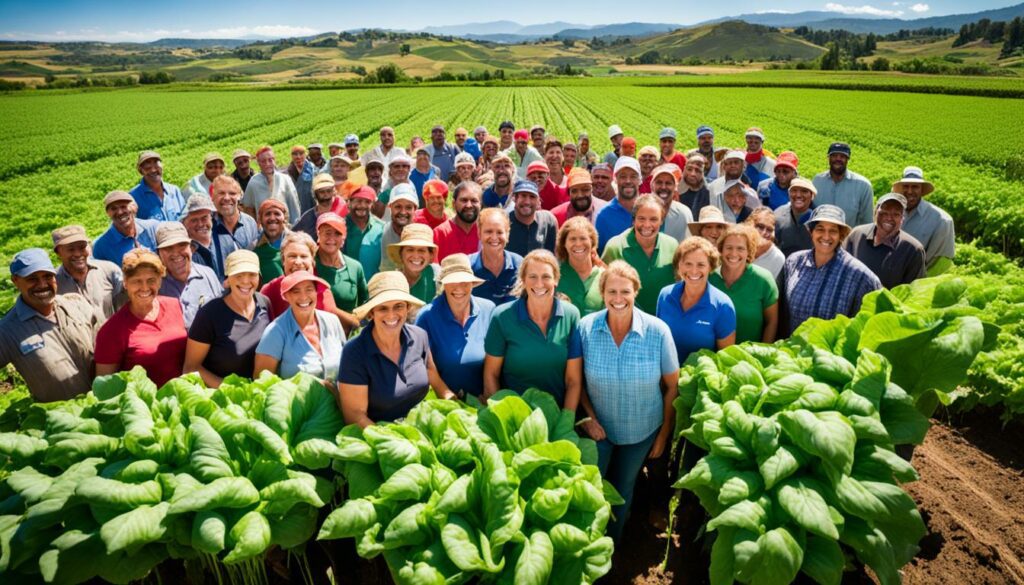
Cooperatives help farmers get into markets in new and better ways. They join forces to overcome barriers. This means their products can reach more people, which is good for everyone involved.
In the U.S., states like Minnesota and California have seen great success through cooperatives. In Argentina, where a lot of land is run by cooperatives, their benefits are clear. This shows that cooperatives really do make a difference for farmers globally.
Cooperatives boost the power of farmers in dealing with buyers. Together, they can ask for better prices and terms. This strength proves crucial for the financial health of farming businesses.
Last year, U.S. cooperatives made $22.2 billion. This highlights the major role they play. They offer farmers a way to stand strong against bigger companies. This keeps the market fair for all.
In conclusion, cooperatives play a vital part in economic growth. They improve market access and increase farmers’ power. As they grow, they will continue to support the farming economy. This paves the way for lasting success.
Agricultural cooperatives greatly boost the agriculture field in various ways. They place a strong emphasis on high production standards and the use of modern tools. With over 1.2 million farming cooperatives worldwide, their wide use shows how important they are in managing farms and pushing the sector forward.
In the United States, these co-ops are a mainstay in states like Minnesota and Wisconsin. They help boost the quality of what’s produced and push for the acceptance of new tech in farming. This is especially helpful for farmers facing money issues.
Similarly, Canada has over 1,200 of these rural groups, showing their big role in North American farming.
Cooperatives are key in bettering what’s produced by sticking to set standards. In places like Argentina, they look after most farmlands, keeping the quality high. Studies show that being part of a cooperative can boost a farm’s output and make it easier to sell products. This helps the agriculture sector become stronger.
Agricultural cooperatives are also pivotal in bringing in new technologies. This is important because only a few farmers around the world use digital tools. But groups like the Gullah Farmers Cooperative in the U.S. are leading a change. They set up modern facilities to help local farmers. For example, they recently started a big processing site with help from the USDA.
These co-ops are also great for pooling money to buy new tech. In the U.S. alone, farming groups working together made $22.2 billion in 2020. This shows big economic success. We still need more studies on how effective this teamwork is for farming growth. But, it’s obvious that cooperatives are pivotal for bringing innovation and advancing the agriculture sector as a whole.

Since 1893, Sunkist Growers, Inc. has shown how smart farming cooperation works. By 1997, it was a top U.S. food company, hitting $1.075 billion in sales. This marked them as a major player among the nation’s food processors. The major success reflects Sunkist’s innovative strategies in marketing and operations.
Sunkist is greatly known for its successful farming marketing. It’s especially famed for citrus quality and its logo found around the world. Since 1952, more than half of the citrus from California and Arizona has been Sunkist. This made the brand the 43rd most known in the U.S. and the 47th in the world. Sunkist has overcome major challenges, like legal battles and government orders, showing its strength over time.
Lawyer Aaron Sapiro played a key role in Sunkist’s success. He introduced the California Plan, changing how farming cooperatives worked. Sapiro underlined the power of farmers working together to control their market. His model helped Sunkist and others grow, showing the benefits of a well-organised approach in farming.
Three key events marked Sunkist’s journey:
| Key Achievements | Statistics |
|---|---|
| Annual Sales (1997) | $1.075 billion |
| Trademark Recognition (U.S.) | 43rd |
| Trademark Recognition (World) | 47th |
Sunkist’s story shows how good marketing and history are key to success. Looking at the California Plan and Sapiro’s model, we learn how essential it is for farmers to have a strong say in their market. This is what set Sunkist apart in farming.
Texas has greatly improved economically thanks to agricultural cooperatives. With a focus on creating jobs, these groups have boosted the economy. They also help local communities by involving them in shared ownership.
Based on the TACC Cooperative Assessment Survey, the impact is big. 96 cooperatives in Texas add more than $825 million to the state’s GDP. They also create about 20,000 jobs.
Cooperatives do 12% more for the Texas GDP than a normal business. For every two cooperative jobs, five more jobs are made elsewhere. This shows how important their role is in creating jobs in Texas.
Empowering rural areas is key for these cooperatives. They focus on fair profit sharing and giving everyone a voice. This approach has lifted economic prospects in these communities.
Their efforts lead to $631 million in extra sales and a $233 million bump in the local GDP. Plus, 30 cooperatives are top property tax payers in their areas, showing their value. They add 9.2% more to Texas’ total economy. And they add 11.6% more in value compared to traditional businesses. This points to their significant role in boosting local economies and empowering communities in Texas.
Agricultural cooperatives play a key role in pushing for sustainable farm methods. They do this by promoting green practices across farming. With their combined efforts, they can inspire more efficient use of resources and encourage greener farming.

Cooperatives work together to make going green easier. They share tips and tools so that farmers can adopt green methods. This means more farmers using things like natural farming and changing the crops they grow each year.
Less use of chemicals is one result of these methods. There are over 1.2 million of these co-ops globally, focused on helping our environment.
Co-ops are great at using resources better. They team up to buy high-tech farming tools that boost their yields and limit waste.
This is particularly big in the United States, where farming co-ops made $22.2 billion last year. Working together, they can better care for water, land, and energy sources for our future.
They also solve a money problem farmers sometimes face. If farmers can’t put in much money, it’s hard to keep co-op products and services coming. But, by being careful with things and doing good for the earth, co-ops help the whole farming world stay healthy.
| Region | Number of Co-ops | Focus Areas |
|---|---|---|
| United States | Concentrated in Minnesota, Iowa, Wisconsin, California, Illinois | Sustainable Farming Initiatives, Market Access |
| Canada | Over 1,200 rural co-ops | Resource Efficiency, Organic Practices |
| Argentina | Managing over 80% of farmlands | Environmental Sustainability, Farmer Empowerment |
Agricultural cooperatives benefit rural areas by boosting the local economy and fighting poverty. They keep money within the community, which helps create jobs and improve services.
Cooperatives help the local economy grow. For example, in 1976, 5,900 cooperatives made about $1.3 billion. Also, electric cooperatives made $388 million in 1978 and $340 million in 1977. These numbers show how cooperatives make a big difference in rural areas.
In 1976, farmers saw a 21% return on their cooperative investments. This was 7.1% of their total income. Riceland Foods paid its members more than the market price for rice, proving the gains possible.
Cooperatives also help reduce rural poverty. For example, in 1978, they made a net income of $369 million. This shows how they provide financial stability for farmers. Farmers investing in cooperatives in 1979 shows their local economic impact, with average investments at $6,423 per farm.
| Year | Net Margins (Million $) |
|---|---|
| 1976 | 1300 |
| 1977 | 674 |
| 1978 | 757 |
Globally, there are over 1.2 million farming co-ops. They bolster local economies and fight poverty worldwide. This underlines their significant role in rural development.
Agricultural cooperatives face big hurdles in today’s competitive setting. The main issues are competition with non-cooperatives and keeping member engagement. Overcoming these challenges is key to staying strong.
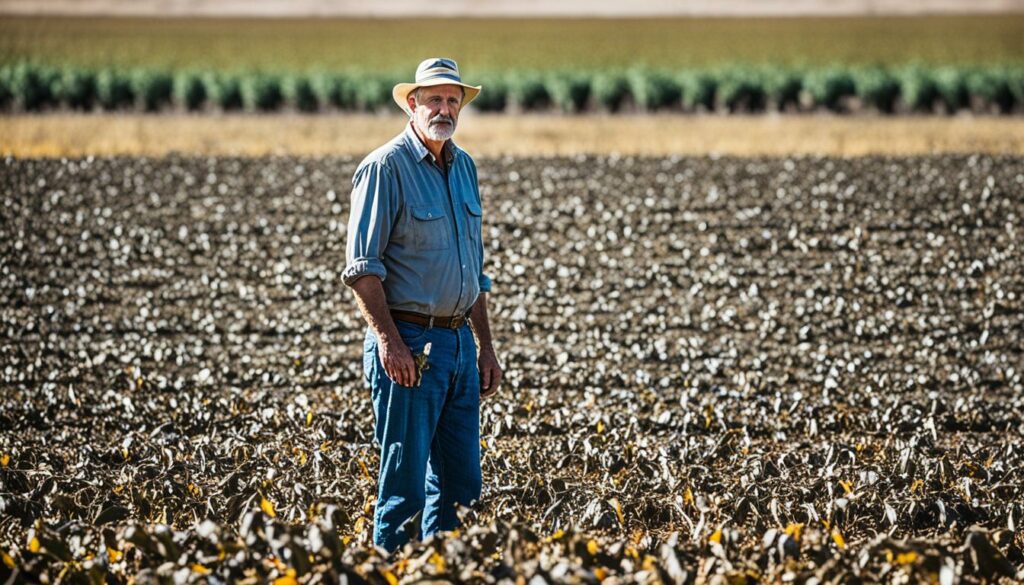
Big, non-cooperative businesses pose a real threat to cooperatives. They often have more money and influence. So, cooperatives must be creative to compete. In 2009, cooperative businesses in the U.S. controlled over $3 trillion in assets. Despite this, they need to keep up with non-cooperatives to stay in the game.
Agricultural marketing cooperatives made nearly $130 billion and created over 200,000 jobs. This shows their impact, even with strong competition.
| Factor | Cooperative Contribution | Non-Cooperative Challenge |
|---|---|---|
| Assets Control | $3 trillion | Significant financial backing |
| Revenue | $130 billion | Market dominance |
| Employment | Over 200,000 jobs | More significant employer branding |
Member engagement is vital for any cooperative’s lasting success. Over 2 million people work at cooperative businesses. They received nearly $79 billion in income, showing how much they contribute and benefit.
Also, about 715,000 farmers are in agricultural marketing cooperatives. It shows the importance of them being active members. The key is to communicate well. Show members and the public the value of cooperatives through their economic benefits.
Cooperatives also aim to attract members with various opportunities, like scholarships. They offer about $150,000 annually. Cooperatives have put over $20 million into scholarships and other educational support. This shows their dedication to member growth and engagement.
Handling competition with non-cooperatives and maintaining member engagement is vital for cooperative sustainability. Strategic planning is key. It’s important to tackle financial issues and ensure good governance. These steps can help cooperatives grow and stay strong in the future.
Leading agricultural cooperatives is key to making them work well. Leaders must focus on business success and follow rules while taking care of members’ interests. They need to mix making money with looking out for their members.
Cooperative leaders steer how the cooperative does and if it’s doing well. They plan ahead, look after the money, and make sure everyone sticks to the rules. Good leaders promote managing themselves, being fair, clear, and thinking about the future. This builds trust and loyalty among members.
When cooperative leaders make things open and fair, the cooperative becomes better. It becomes a place where people want to work hard and be a part of.
Being involved is very important in cooperatives. Everyone gets to help make big decisions together. This way, each member has a say in what happens. Making decisions together helps the cooperative grow and do better, which helps everyone involved.
This shared way of making choices improve finances and bring more value. It helps both the individuals and the cooperative as a team.
On the global front, Brazilian cooperatives show the power of working together. In 2018, there were 6,887 of them and 1,618 worked in farming. They handled 48% of Brazil’s food exports, making a big mark globally. By working together well, they help farmers earn more and produce more food, showing how important leadership is in these groups.
| Region | Role in Production | Key Impact |
|---|---|---|
| Southeast | Major Food Production | Local Economic Growth |
| South | Advanced Agribusiness | Improved Technology Adoption |
| Center-West | Food Export Hub | Global Market Integration |
Good ways of leading and everyone joining in make agricultural cooperatives succeed. They affect both local areas and the world.
For the last 70 years, agricultural cooperatives in the U.S. have been finding ways to fit into the economy. Their main goal is to help family farmers. They wanted to protect these farmers from being taken advantage of in the competitive food market. Since the New Deal, these cooperatives have played a big role in the economy.
People like Aaron Sapiro and Edwin Nourse saw the value of these cooperatives. Sapiro started the California Plan in 1923 to help growers come together. This let them control more of the market. It helped the U.S. economy grow by making sure more money went back to the farmers.
Edwin Nourse also helped by creating cooperative models. He wanted farmers to get fair deals. He saw these cooperatives as not just money-making groups but as places that could help farmers’ lives. This made them important in the economy.
Agricultural cooperatives do more than just support farmers. By the 21st century, they started including more people, needing more money for farming. This change helped them do better in the modern economy.
In 1987, a USDA report said these cooperatives need to keep changing to grow the economy. They should adapt, have good leaders, keep their finances strong, and teach others about what they do. Another report in 2002 talked about new issues, but still saw cooperatives as important for the economy.

| Key Aspects | Economic Contributions |
|---|---|
| Market Access | Enhanced market stability and producer control |
| Competition | Restoration of fair market practices for farmers |
| Social Influence | Empowerment of farmers as key economic players |
| Adaptation | Continuous evolution to meet modern demands |
Agricultural cooperatives play a crucial role in the economy and communities. They can get better deals for farmers, which helps everyone. As they change and include more people, they keep playing an important part in the farming future. They improve economic growth and stability.
It’s vital to understand how different business types affect the economy. This is crucial in farming, where both cooperatives and non-cooperative firms are important. We will explore how their economic roles differ and the benefits cooperatives bring to the table.
Agricultural cooperatives come out on top in several ways compared to non-cooperative firms. A study of 102 farmers showed that those in cooperatives made more profit. This is because they could bargain together and share resources to cut costs. In New York, cooperatives help create more jobs, increase incomes, and boost the economy more than non-cooperatives do.
Cooperatives offer a range of benefits in farm economics. They can reduce farmers’ costs by working together. For example, working on hiring costs can save a lot of money. Plus, they can make sure farmers get a good price and a steady income, helping in places like Indonesia, where many coffee growers are in cooperatives.
Pooling resources is a big plus for cooperatives. It lets farmers use the latest tech and green methods, which can make their products better. This helps increase their net income while also saving money.
| Metric | Cooperative Farmers | Non-Cooperative Farmers |
|---|---|---|
| Net Profit | Higher | Lower |
| Market Access | Enhanced | Limited |
| Resource Allocation | Optimized | Variable |
| Labour Costs | Reduced | Higher |
Cooperatives also focus on helping the community and sharing profits fairly. This can make local economies stronger and farming more sustainable. Studies show that cooperatives deal with profit-sharing better than non-cooperatives do.
Cooperatives bring big benefits to farming. They help farmers succeed and strengthen the whole farming sector.
The way we farm is changing. So are agricultural cooperatives. They need to keep up with trends to stay strong. This means using digital tools more and selling in global markets, all while caring for the planet.
Farming is changing fast, thanks to digital and eco-friendly trends. For cooperatives to matter, they must use these new trends well. The U.S. had 1,744 farmer-owned cooperatives in 2020, with 1.8 million members. This shows how big a role they play.
These cooperatives are doing well, with sales hitting $200 billion. Their secret? They change with the times. They use new tech, smart marketing, and better farming methods. This keeps them ahead.
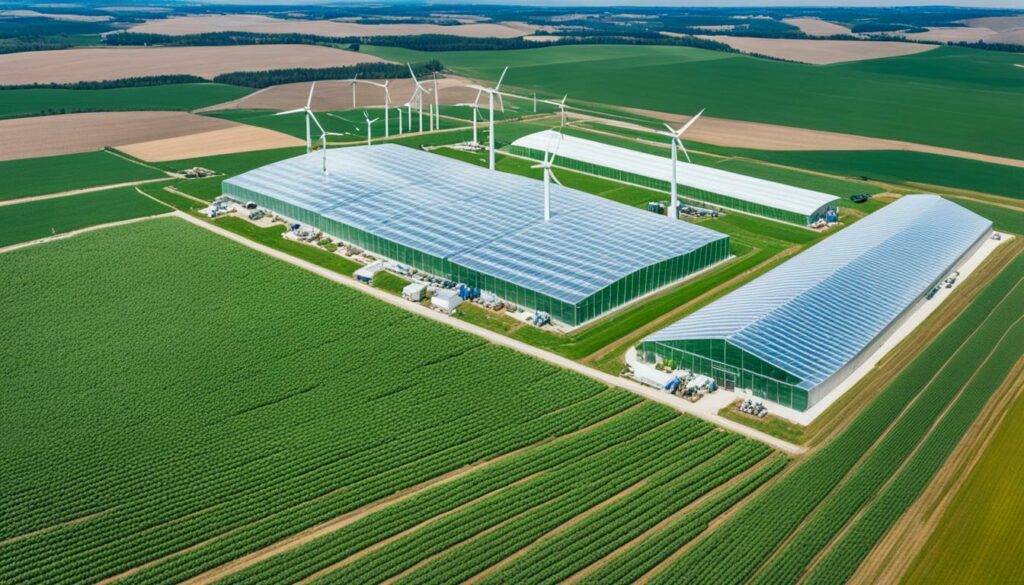
Being creative is key for cooperatives. The way they’re set up makes trying new tech and methods easy. For example, in Oklahoma, growing cotton makes $100 more profit per acre than other crops. This shows how trying new things can pay off.
Cooperatives also come up with smart financial moves. They put back profits to grow without asking for more money from their members. This keeps prices fair in the market and helps farmers stay strong over time.
| Key Trends | Impact on Cooperatives |
|---|---|
| Digitalisation | Enhances data utilisation and precision farming, creating efficiencies. |
| Market Globalisation | Expands market access and international trade opportunities. |
| Sustainable Practices | Promotes eco-friendly farming and long-term viability. |
Agricultural cooperatives greatly benefit from policies that help them grow efficiently. These include action by the government, financial help, and laws that make their work easier. Such policies are key to the success and lasting power of cooperatives.
Government support is vital for agricultural cooperatives. This support involves money, advice, and teaching. It helps cooperatives deal with problems and grow strong. An example from the 20th century is how cooperatives helped rural areas get banking and electricity, thanks to government support.
Next, agricultural cooperatives rely on financial help, known as subsidies. Subsidies aid in building new things, coming up with better ways to farm, and ways to learn. This is especially helpful for small farmers. With government support, the World Development Report shows that farming becomes more stable and successful through cooperatives.
Interestingly, setting rules for cooperatives can also be a problem. These rules might be too hard for small cooperatives to follow. Researchers say the rules and how they work need more study and might need to change.
Creating rules for cooperatives is tricky. It should help them grow but also make sure they do things right. Writers in the Journal of Co-operative Organization and Management argue for rules that help cooperatives start and grow. But these rules must also follow general laws and market rules.
In another light, getting approval and following all the rules can be tough. This can limit what cooperatives can do. Scientists in the Journal of Rural Studies say we need better plans to help cooperatives fit in with bigger goals for the future.
To wrap up, clear policies, government support, and subsidies are crucial for cooperative growth. But, we must also make sure that rules support, not block, cooperatives. By working through politics and the law, cooperatives can keep helping in farming and beyond.
| Aspect | Supportive Measure | Outcome |
|---|---|---|
| Government Initiatives | Infrastructure, training, and innovation aids | Increased cooperative efficiency and opportunities |
| Agricultural Subsidies | Financial support to cooperatives | Stabilisation of the agricultural sector |
| Regulatory Environment | Flexible legal frameworks, tax exemptions | Facilitation of cooperative growth |
A case study explored how cooperatives in New York State boost the economy. They are key players in areas like agricultural supply, service, and marketing. These areas help improve the local economic scene.
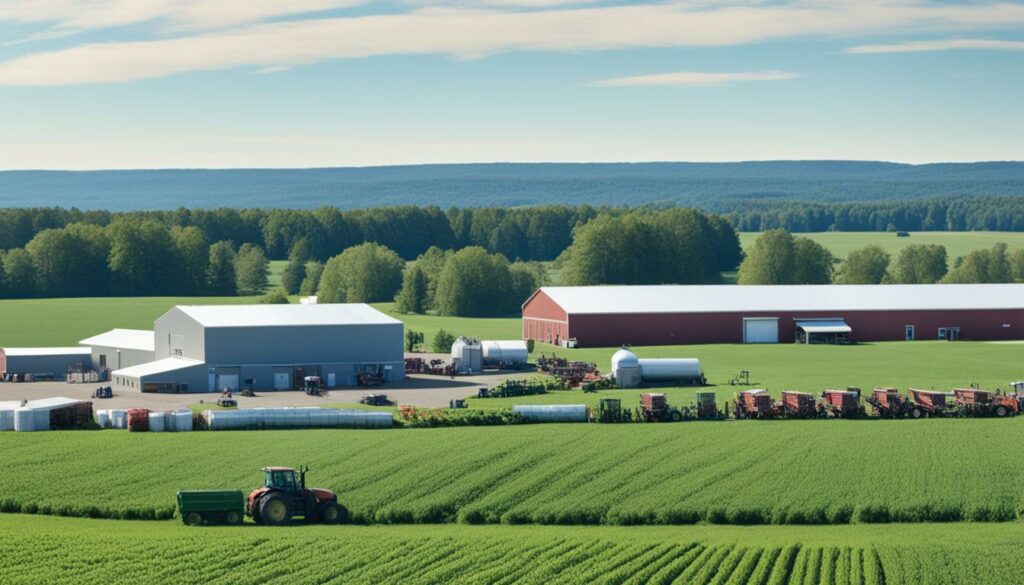
New York State cooperatives spend more locally than many other businesses. A survey gathered responses from over a thousand cooperatives. This showed their focus on local spending. The study looked at 1,244 cooperatives, getting insights on both past and future spending. Future spending proved to have more responses than past spending.
Table analysis shows how cooperatives impact the economy across several sectors:
| Sector | Economic Impact | Findings |
|---|---|---|
| Commercial Sales and Marketing | High | Key economic indicators show significant contributions. |
| Social and Public Services | Moderate | Economic impacts reflect support for local communities. |
| Financial Services | High | Contributions to financial stability and access in rural areas. |
| Utilities Cooperatives | Moderate | Impact on local utility services and infrastructure. |
The study also showed the big role cooperatives play in rural development. They boost jobs, income, and output more than other businesses. This means a lot for the local economy and encourages rural growth.
Agricultural cooperatives have come far in the last 70 years, making a place for themselves in the U.S. economy. They faced a big challenge in the late 1990s when the pork industry suffered. But they changed their ways, welcoming others besides farmers. This was to keep up with the needs of modern farming. Their response shows how much they care about staying strong and important in farming.
The start of big, organised marketing in farming was in 1923 with something called the “California Plan”. A lawyer named Aaron Sapiro showed how well it could work. He got most almond and raisin farmers to join forces. This made marketing a key part of farming. Also, Edwin Nourse’s ideas helped make sure there’s fair competition in the market. Together, these efforts helped cooperatives play a big role in the economy.
Today, there are more than 1.2 million farming cooperatives around the world. The U.S. has many of them, especially in places like Minnesota and California. In the year 2020 alone, U.S. farm cooperatives brought in $22.2 billion. Even with this success, many farms haven’t yet fully used new digital tools. This shows there’s still room to grow and improve. Looking to the future, it’s important to help these cooperatives with the right policies and new technology. This way, they can keep benefiting the economy and the world of farming.
Agricultural cooperatives boost the economy by giving farmers better market access. They help farmers have more power when negotiating and work for community empowerment. This makes the farming sector more fair and helps sustain the land.
Agricultural cooperatives started in the U.S. about 70 years ago. They began to team up to break market monopolies and gain better access to markets. Over time, they learned to balance economic success with the independence of their members.
Cooperatives help farmers get into markets by combining their resources. This gives them power when negotiating, earning them better deals and fairer prices. It strengthens their economic position and place in the market.
Cooperatives are key in raising production quality. They set standards and push for the use of new technologies. This meets the market’s needs for efficiency and good prices.
The Sunkist success, led by Aaron Sapiro’s California Plan, shows how big producer groups benefit. They focused on controlling their products and agreeing on marketing. This approach helped Sunkist grow and make better deals.
In Texas, agricultural cooperatives help a lot. They create jobs and add to the state’s GDP. They also work with communities, sharing profits fairly to boost the local economy.
Cooperatives push for sustainable farming by pooling resources and knowledge. This makes it easier to use eco-friendly methods and technologies. It’s good for the earth and for farmers’ finances.
Cooperatives make sure money stays in the community. This boosts local spending, creates jobs, and improves services. It all helps fight rural poverty.
Cooperatives struggle with competition from non-cooperative businesses and keeping members engaged. They work in a market dominated by big companies. Thus, they must keep their members involved to last over time.
Cooperative leaders aim for profit while sticking to co-op principles. They ensure everyone’s voice is heard and members are active. This balances making money with what’s best for the members.
Agricultural cooperatives boost the economy by helping farmers get better deals and access to markets. They are economic powerhouses that also support their communities. This drives growth in farming and rural areas.
Cooperatives are more positive for the local economy because they focus their spending and profits locally. Their strong group power and community investments make them different from other businesses.
Co-ops need to keep up with digitalisation and global markets. They can innovate their models and use new tech to stay successful.
Policies and subsidies are very important for co-op growth. They provide the framework for development. But, there are also rules that they must follow to keep running.
In New York State, cooperatives are big in the local economy, especially in farming services. They increase local spending, create jobs, and help rural areas grow through their activities.